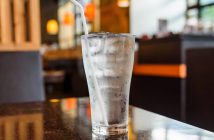We’ve all had those irritating moments of recoiling from a hot kitchen surface in pain. It may only seem like a minor frustration at first, but if not treated correctly a burn can cause damage to the skin, leave lingering pain, and even leave a scar. That’s why this article will try to get past the myths of treating household burns, because you don’t want to take chances on your skin and health.
A kitchen burn can actually be thought of as a medical condition caused by injury of the tissues due to contact with heat, chemicals, and electricity. In order to prevent infection there must be immediate treatment and medical attention. For diagnostic reasons and conduction purposes burns have been placed into three different categories: There is the first degree burn, second degree burn and third degree burn.
A first degree burn is the least severe of the three types of burns. The sign of a first degree burn consists of a swollen epidermis (the outer layer of the skin), redness and pain. In most cases, it can be treated at home, especially if it does not cover a significant portion of the body.
Myth: Applying cold butter to the burned area of the body will cool the area of the burn while soothing the injury.
Fact: Butter traps heat inside of the damaged tissues. This can result in more damage and increase the chances of developing an infection. Application of cold water on the affected area will soothe the affected area.
- The first step in treating a minor burn is to hold the affected area under ice or cold (if possible) running water between ten and fifteen minutes.
- Do not place the ice directly on the burn. Direct contact of the ice can cause frostbite or other irreparable damage.
- After the burn has cooled through the application of the cold water, or compressed exposure, cover the area with lotion.
- After the burn is moisturized, cover it with a sterilized bandage.
- Wrap the burn loosely and avoid placing too much pressure on the wounded area
A second degree burnis classified as superficial because it affects both the epidermis and dermis (the second layer of skin). The sign of a second degree burn indicates vesication and is partially deep. This type of burn would most likely occur in the kitchen when some type of scalding liquid gets on the skin. If it is not removed immediately, it may burn deeper into the skin.
The skin experiences extreme reddening, swelling and blisters are likely to appear in addition to a very blotchy or spotted exterior in the area of the burn. In some cases the body will produces blisters filled with fluid in order to thwart infections.
Myth: Using alcohol to cleanse the burned area will provide a soothing affect and pricking blisters will help speed the healing process.
Fact: The application of alcohol can result in excruciating pain and make the burn worse. Pricking blisters increases the risk of infection.
- Cleanse the area with water and pure soap.
- Dry the area.
- Apply an antibiotic gel or cream
- Loosely wrap the area with a sterilized bandage.
- If necessary, it is safe to remove the dead flesh from the popped blisters.
A third degree burn affects all three layers of the skin. We don’t normally think of kitchen burns as being this severe, but recognizing them and knowing that they must receive further attention than home remedies could save much pain and scarring. In some cases, areas at which the flesh has been smoldered, the skin is charred black and is likely to be accompanied by severe pain. In other cases, nerve damage and numbness to pain is also likely to occur.
All third degree burns are in need of remedial attention. When taking precaution, be sure to completely exterminate the original source of the burn.
- Do not remove any burned clothing that has clung to the flesh skin.
- Cover the entire burned area with a dry sterilized bandage or clean cloth until medical treatment has been received
- Use a cotton bed sheet for large areas.
- Do not use blankets or towels (both tend to cling to burns)
- Do not apply antibiotic creams or gels
- Do not try to bust blisters.
Regardless of the level of severity, all types of burns are in need of the right steps of treatment. It is important to be educated on the proper ways to care for the damages caused by burns. This includes a thorough understanding of the common facts and myths so that when a burn inevitably happens, you can make sure it does not frustrate your life.
Author Bio: Anna D. is a freelance writer and nursing student. She likes to debunk common medical myths and give advice to people seeking natural ways for easy healing. She recommends cheap health insurance plans from several companies that offer cheap health insurance.




